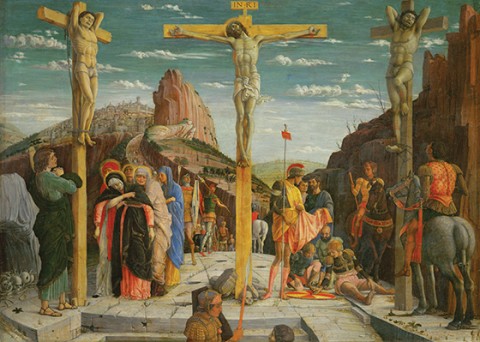Calvary, by Andrea Mantegna

Andrea Mantegna (1431–1506) was only 26 when he received the commission for the predellas (horizontal panels) beneath the high altar in the church of San Zeno in Verona, Italy. The scene is symmetrical in Renaissance fashion. Three crosses mark a paved area outside the walls of Jerusalem. This symmetry continues throughout the painting: compositionally, the soldier on horseback in the right corner corresponds to the apostle John on the left; Mary and the cluster of women supporting her are balanced by the gang of soldiers casting lots for Jesus’ tunic. The Roman executioners are inattentive to and distracted from the suffering they are so casually inflicting. The body of the unrepentant thief on Jesus’ left is contorted in pain and lies in the shadows; he turns his head away from Jesus. Jesus cocks his head toward the penitent thief on his right, offering him words of consolation and salvation (Luke 23:42–43).





